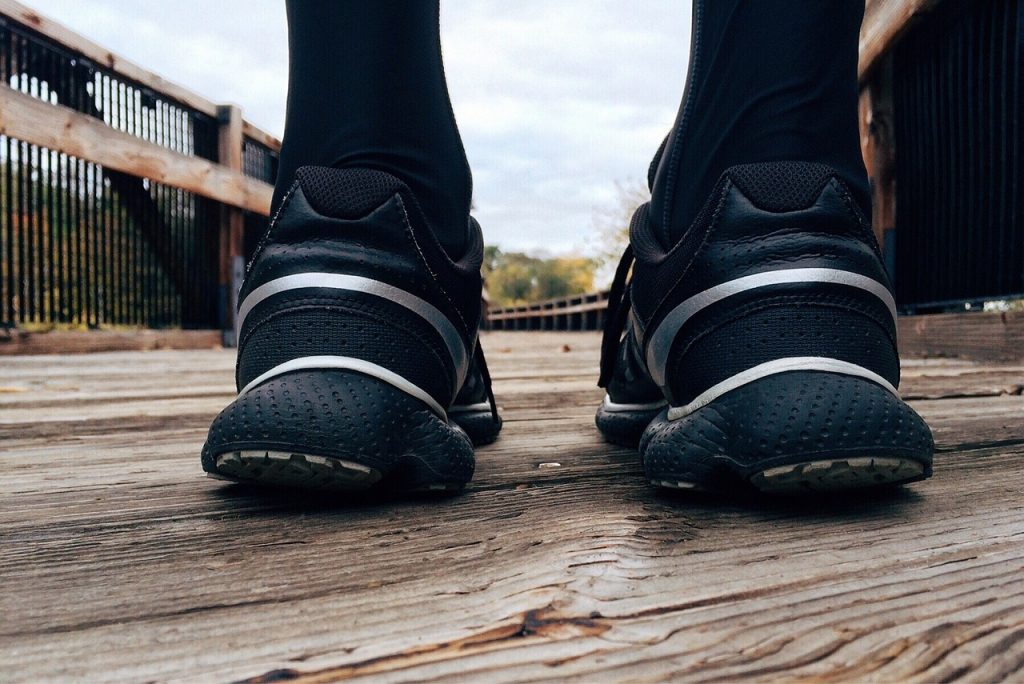Orthotics are custom-made or over-the-counter inserts designed to support, align, or improve the function of the feet. They can be a valuable tool for those suffering from chronic foot pain caused by conditions such as plantar fasciitis, flat feet, high arches, arthritis, or bunions. When used properly, orthotics can provide relief, improve posture, and prevent further complications. However, many individuals make mistakes in their use of orthotics, which can diminish their effectiveness or even exacerbate foot pain. Understanding these common mistakes and how to avoid them is crucial for ensuring that orthotics serve their intended purpose.
Mistake 1: Using Over-the-Counter Orthotics Instead of Custom-Made Ones
One of the most common mistakes people make is opting for over-the-counter (OTC) orthotics instead of investing in custom-made orthotics designed specifically for their foot condition. While OTC orthotics may seem more convenient and cost-effective, they are typically mass-produced and do not consider the unique needs of each individual.
Explanation
Over-the-counter orthotics are created to fit a general population, meaning they offer limited customization. If you have a specific foot structure, like flat feet, high arches, or a particular gait pattern, OTC orthotics may not provide adequate support. On the other hand, custom orthotics are designed by a podiatrist or orthopedic specialist, who takes a mold of your foot and designs the insert to suit your specific condition.
Consequences
Using OTC orthotics when custom ones are necessary can lead to the following consequences:
- Inadequate support: Because OTC inserts are not tailored to your feet, they may fail to provide proper arch support or cushioning where it’s needed, leading to ongoing or worsened pain.
- Increased pressure points: Instead of alleviating pain, poorly fitting orthotics can create pressure points in areas like the heel, toes, or arch, causing new foot problems or exacerbating existing ones.
- Biomechanical misalignment: Inaccurate orthotic design can worsen the alignment of the feet, knees, hips, and back, leading to musculoskeletal problems that extend beyond foot pain.
How to Avoid It
- Consult with a podiatrist or orthopedic specialist before purchasing orthotics.
- Opt for custom-made orthotics if you have a specific condition that cannot be addressed by OTC options.
- Use OTC orthotics only for temporary or mild conditions and under professional guidance.
Mistake 2: Not Breaking in the Orthotics Properly
Another common error is failing to break in orthotics properly. Many people expect immediate relief from their foot pain after inserting orthotics into their shoes, but the truth is that it takes time for the body to adjust to the new support and alignment.
Explanation
Orthotics, whether custom-made or OTC, alter the way your feet bear weight and distribute pressure. If you’ve been dealing with chronic foot pain for an extended period, your body has likely compensated for improper foot alignment in various ways. Adjusting to the correct alignment requires a gradual process so that the muscles, tendons, and ligaments in your feet (and sometimes your entire body) can adapt.
Consequences
Failing to break in orthotics can result in:
- Increased discomfort or pain: Wearing orthotics for extended periods without proper break-in can worsen foot pain as your feet and body may not be accustomed to the new positioning.
- Foot fatigue: Without a proper adjustment period, you might experience muscle fatigue in your feet or legs, as they’re forced to work in ways they’re not used to.
- Decreased compliance: If the orthotics cause more pain initially, some people may stop using them altogether, forfeiting the potential benefits.
How to Avoid It
- Start by wearing the orthotics for short periods (30 minutes to 1 hour) on the first few days and gradually increase the wear time as your feet adjust.
- Monitor your comfort levels and note any increase in pain or discomfort, discussing this with your healthcare provider if necessary.
- Be patient with the process, understanding that orthotics may take 1-2 weeks or even longer to fully adjust to.
Mistake 3: Wearing the Wrong Shoes with Orthotics
Orthotics can only do so much when paired with the wrong type of shoe. Many people continue to wear shoes that are inappropriate for their foot condition, undermining the corrective work of the orthotics.
Explanation
The shoe is the foundation that holds the orthotic. If the shoes are too narrow, too flat, or do not provide enough stability, they can limit the benefits of the orthotics. For example, shoes with inadequate arch support or overly flexible soles can counteract the stabilizing effect of orthotics, making them ineffective.
Consequences
Wearing the wrong shoes with orthotics can result in:
- Loss of proper alignment: Ill-fitting shoes can cause the foot to move out of the correct alignment, which can render the orthotic useless.
- Increased foot pain: Shoes that are too tight or have poor structure can add unnecessary pressure to your feet, worsening pain or causing new issues like blisters or calluses.
- Worsening of other conditions: Incorrect shoes can lead to problems beyond foot pain, such as knee, hip, or lower back pain, as the misalignment caused by improper footwear can radiate up through the body.
How to Avoid It
- Choose shoes that complement your orthotics: They should have a firm heel counter, enough depth to accommodate the orthotic, and a wide toe box to allow room for your feet.
- Avoid flat shoes like flip-flops or minimalist shoes that don’t offer enough support.
- Work with a podiatrist or shoe specialist to ensure your shoes are well-suited for both your feet and the orthotics.

Mistake 4: Expecting Orthotics to Be a Cure-All Solution
One of the most pervasive misconceptions about orthotics is that they are a “magic bullet” solution for foot pain. While orthotics can provide substantial relief and support, they should be considered as part of a larger treatment plan, not the sole answer.
Explanation
Orthotics are designed to correct foot posture, provide support, and redistribute pressure, but they cannot address every underlying issue related to foot pain. Many chronic foot conditions are caused by a combination of factors, including muscle weakness, joint immobility, poor footwear, and even improper movement patterns or posture. Simply inserting orthotics into your shoes without addressing these other issues may not result in full or long-term relief.
Consequences
Relying too heavily on orthotics without considering other treatments can lead to:
- Limited pain relief: Orthotics may help initially but may not resolve the pain completely if other underlying issues are not addressed.
- Delayed recovery: Neglecting complementary treatments like stretching, strengthening exercises, or physical therapy can prolong the healing process.
- Worsening of the condition: If the root cause of your foot pain (such as a biomechanical issue or overuse injury) is not treated comprehensively, orthotics alone may not prevent the condition from worsening over time.
How to Avoid It
- Follow a holistic approach: Work with a healthcare provider to develop a multi-faceted treatment plan that includes stretching, strengthening exercises, and possibly physical therapy.
- Consider other lifestyle changes, such as modifying your footwear, improving posture, or altering your activity levels.
- Regularly review your progress with a professional to ensure the orthotics are still effective and make adjustments as needed.
Mistake 5: Not Replacing or Adjusting Orthotics Over Time
Orthotics, like any other product, wear down over time, and failing to replace or adjust them as needed is a mistake that can reduce their effectiveness. Some people may continue using their orthotics long after they have lost their structural integrity, which can lead to a return of foot pain or even the development of new issues.
Explanation
Orthotics experience wear and tear with daily use. Custom-made orthotics, in particular, are made from materials that compress or break down over time. Additionally, as your feet or posture change (due to weight loss, aging, or changes in activity levels), your orthotics may need to be adjusted or replaced to continue providing adequate support.
Consequences
- Loss of support: Over time, worn-out orthotics may no longer provide the necessary support, leading to the return of foot pain.
- New issues: As the orthotics degrade or become misaligned, they can create new pressure points or alignment issues, leading to discomfort in the feet or elsewhere in the body.
- Worsened foot conditions: If orthotics are not replaced or adjusted in a timely manner, chronic conditions such as plantar fasciitis or arthritis can worsen, making recovery more difficult.
How to Avoid It
- Inspect your orthotics regularly for signs of wear, such as cracks, thinning, or loss of firmness.
- Replace orthotics every 1-2 years, or as recommended by your healthcare provider, depending on your activity level and the materials used in the orthotics.
- Schedule regular follow-up appointments with your podiatrist to ensure the orthotics are still appropriate for your needs and to make any necessary adjustments.
Conclusion
Orthotics can be an incredibly effective tool for managing chronic foot pain, but only when used properly. By avoiding common mistakes like opting for OTC orthotics instead of custom-made ones, failing to break them in gradually, wearing the wrong shoes, expecting orthotics to be a cure-all, or neglecting to replace them over time, individuals can maximize the benefits of orthotics and experience long-term relief from foot pain. It’s important to work closely with a healthcare provider to ensure that your orthotics fit well, are appropriate for your specific condition, and are used in conjunction with a comprehensive treatment plan that addresses all aspects of your foot health.
Find Relief from Chronic Foot Pain with Custom Orthotics from The Shoe Doctor!
If you’re struggling with chronic foot pain that disrupts your daily life, custom orthotics could be the key to restoring your comfort and mobility. Designed specifically to address the unique structure of your feet, custom orthotics provide targeted support to alleviate pain, enhance posture, and improve overall foot health. By addressing the root causes of your discomfort, these orthotics can help you regain the freedom to move without pain while improving your long-term well-being.
At The Shoe Doctor, we bring over 20 years of expertise in creating high-quality, custom orthotics to relieve chronic foot pain. Our specialist, Russell, uses cutting-edge 3D foot mapping and state-of-the-art technology to craft orthotics that perfectly fit your feet. Partnering with the Spine & Injury Medical Center in San Jose, we take a comprehensive, holistic approach to treating foot pain and related mobility issues. If you’re in the South San Francisco Bay Area, The Shoe Doctor is your trusted source for effective, personalized orthotics. Schedule your complimentary consultation today and take the first step toward a pain-free life!
Disclaimer
The materials available on this website are for informational and entertainment purposes only and not to provide medical advice. You should contact your doctor to obtain advice concerning any particular issue or problem. You should not act or refrain from acting based on any content included in this site without seeking medical or other professional advice. The information presented on this website may not reflect the most current medical developments. No action should be taken in reliance on the information contained on this website and we disclaim all liability for actions taken or not taken based on any or all of the contents of this site to the fullest extent permitted by law.


